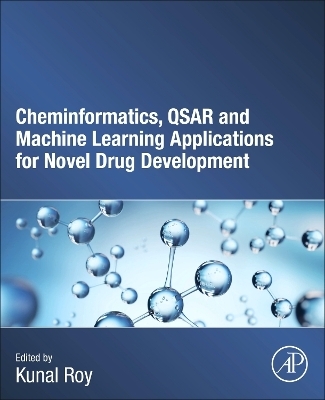
Cheminformatics, QSAR and Machine Learning Applications for Novel Drug Development
Academic Press Inc (Verlag)
978-0-443-18638-7 (ISBN)
Dr. Kunal Roy is a Professor and Ex-Head in the Department of Pharmaceutical Technology, Jadavpur University, Kolkata, India. He has been a recipient of Commonwealth Academic Staff Fellowship (University of Manchester, 2007) and Marie Curie International Incoming Fellowship (University of Manchester, 2013). The field of his research interest is QSAR and Molecular Modeling with application in Drug Design and Ecotoxicological Modeling. Dr. Roy has published more than 350 research articles in refereed journals (current SCOPUS h index 49). He has also coauthored two QSAR-related books, edited six QSAR books and published more than ten book chapters. Dr. Roy is a Co-Editor-in-Chief of Molecular Diversity (Springer Nature). He also serves as a member of the Editorial Boards of several International Journals.
Section I: Introduction 1. Quantitative structure-activity relationships (QSARs) in medicinal chemistry 2. Computer-aided Drug Design – An overview 3. Structure-based virtual screening in Drug Discovery 4. The impact of Artificial Intelligence methods on drug design
Section 2. Methods and Case studies 5. Graph Machine Learning in Drug Discovery 6. Support Vector Machine in Drug Design 7. Understanding protein-ligand interactions using state-of-the-art computer simulation methods 8. Structure-based methods in drug design 9. Structure-based virtual screening 10. Deep learning in drug design 11. Computational methods in the analysis of viral-host interactions 12. Chemical space and Molecular Descriptors for QSAR studies 13. Machine learning methods in drug design 14. Deep learning methodologies in drug design 15. Molecular dynamics in predicting stability of drug receptor interactions
Section 3. Special topics 16. Towards models for bioaccumulation suitable for the pharmaceutical domain 17. Machine Learning as a Modeling Approach for the Account of Nonlinear Information in MIA-QSAR Applications: A Case Study with SVM Applied to Antimalarial (Aza)aurones 18. Deep Learning using molecular image of chemical structure 19. Recent Advances in Deep Learning Enabled Approaches for Identification of Molecules of Therapeutics Relevance 20. Computational toxicology of pharmaceuticals 21. Ecotoxicological QSAR modelling of pharmaceuticals 22. Computational modelling of drugs for neglected diseases 23. Modelling ADMET properties based on Biomimetic Chromatographic Data 24. A systematic chemoinformatic analysis of chemical space, scaffolds and antimicrobial activity of LpxC inhibitors
Section 4. Tools and databases 25. Tools and Software for Computer Aided Drug Design and Discovery 26. Machine learning resources for drug design 27. Building Bioinformatics Web Applications with Streamlit 28. Free tools and databases in ligand and structure-based drug design
| Erscheinungsdatum | 10.07.2023 |
|---|---|
| Verlagsort | San Diego |
| Sprache | englisch |
| Maße | 191 x 235 mm |
| Gewicht | 1590 g |
| Themenwelt | Medizin / Pharmazie ► Medizinische Fachgebiete ► Pharmakologie / Pharmakotherapie |
| Medizin / Pharmazie ► Pharmazie | |
| Naturwissenschaften ► Chemie | |
| Technik | |
| ISBN-10 | 0-443-18638-3 / 0443186383 |
| ISBN-13 | 978-0-443-18638-7 / 9780443186387 |
| Zustand | Neuware |
| Informationen gemäß Produktsicherheitsverordnung (GPSR) | |
| Haben Sie eine Frage zum Produkt? |
aus dem Bereich


